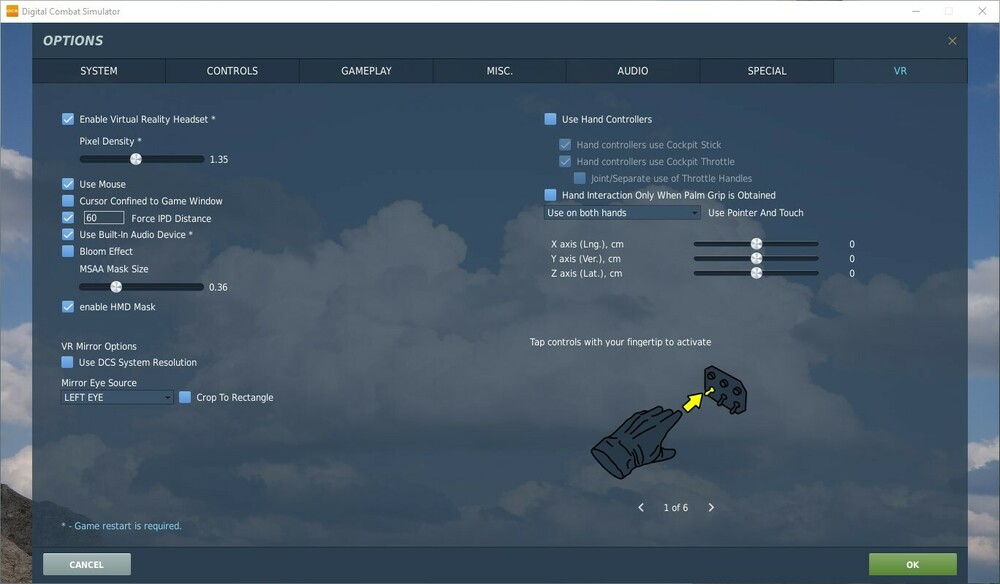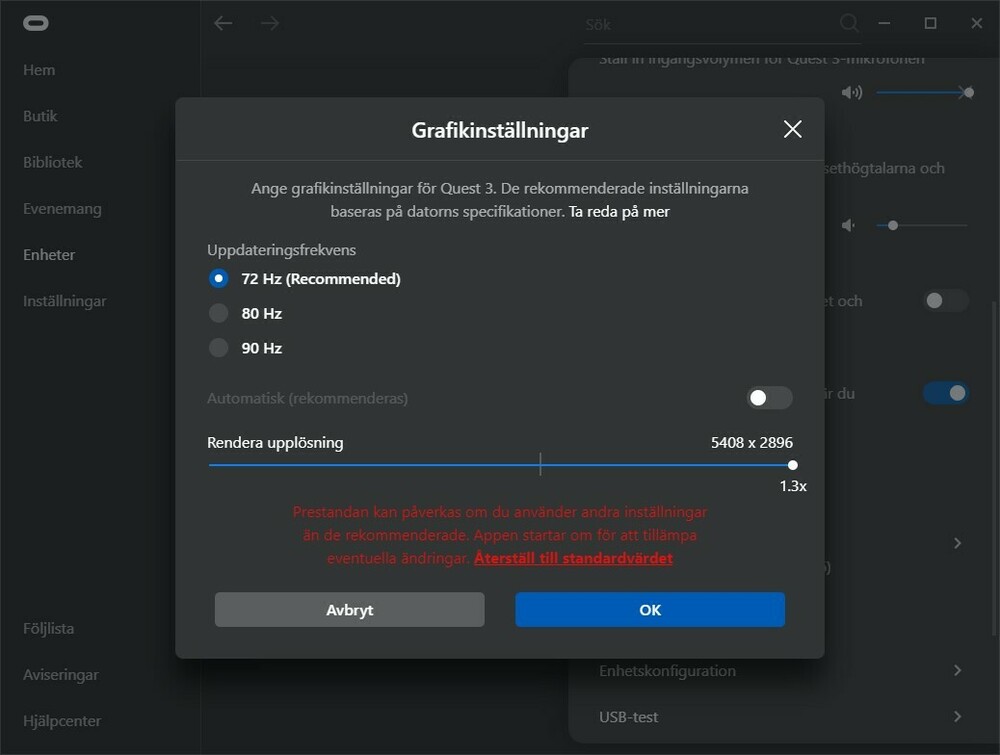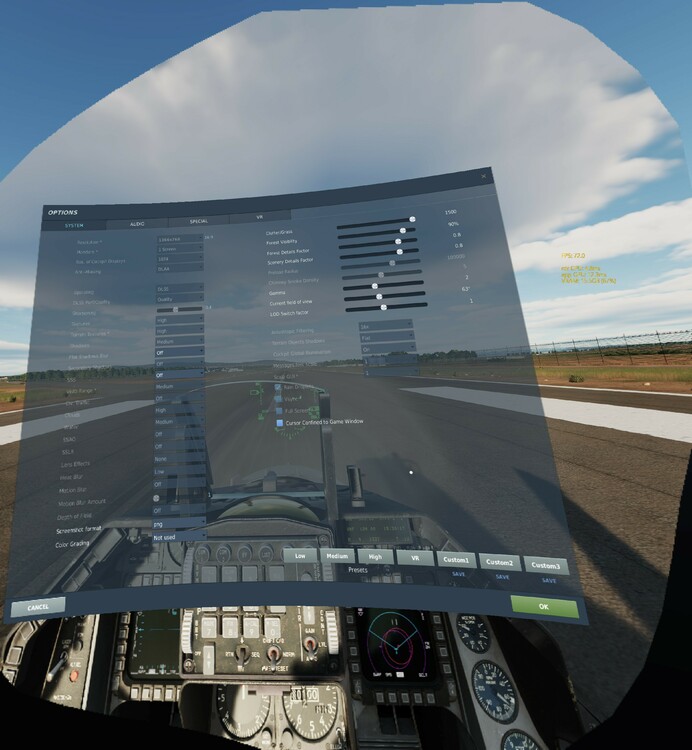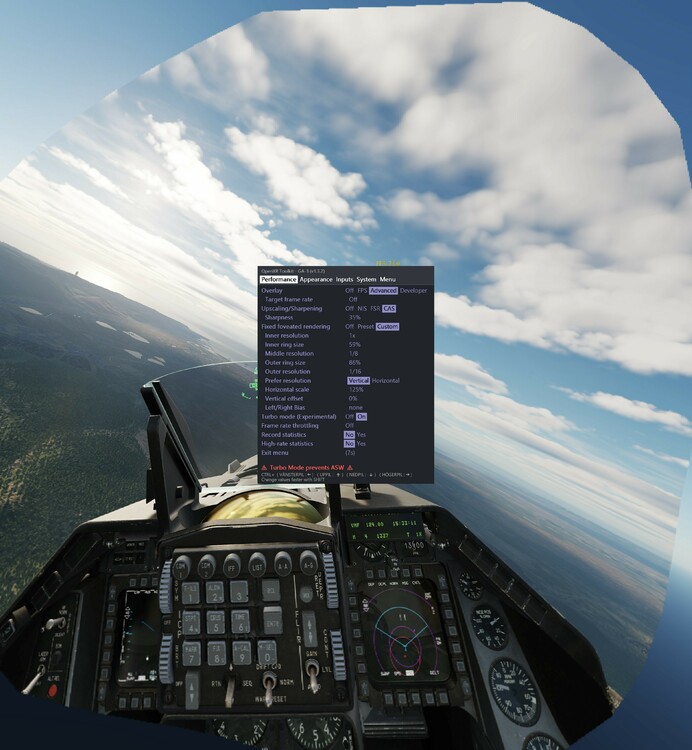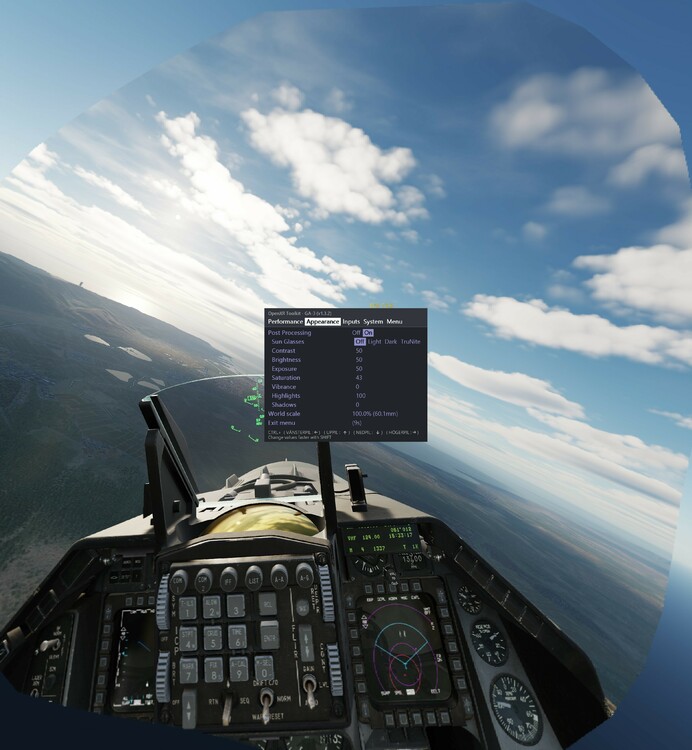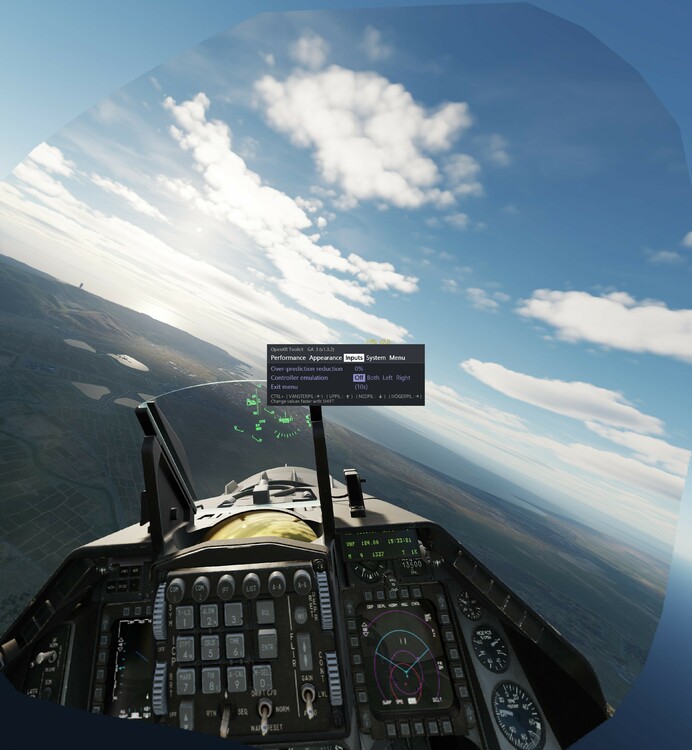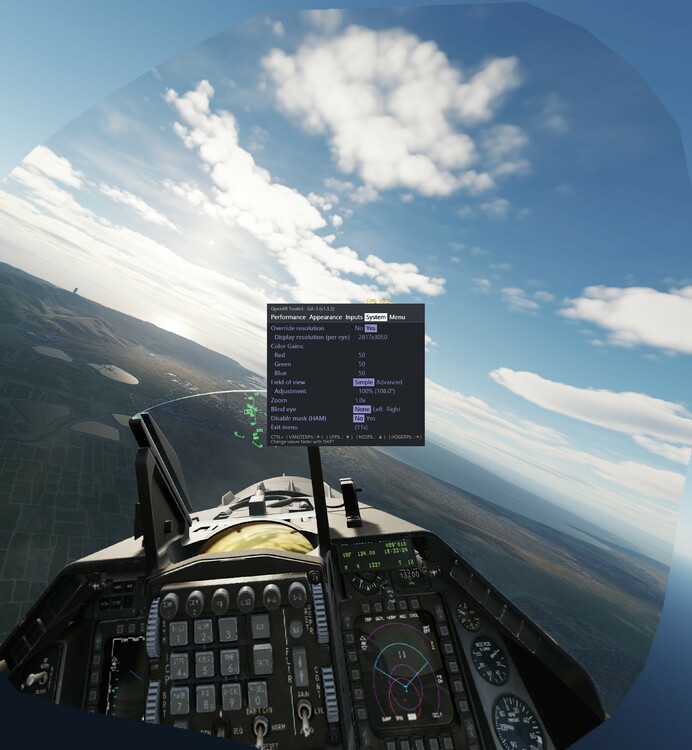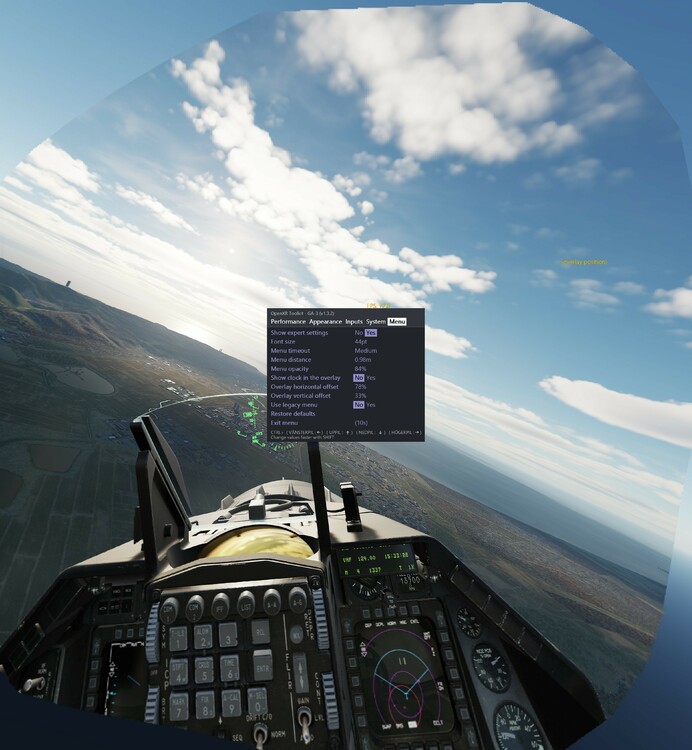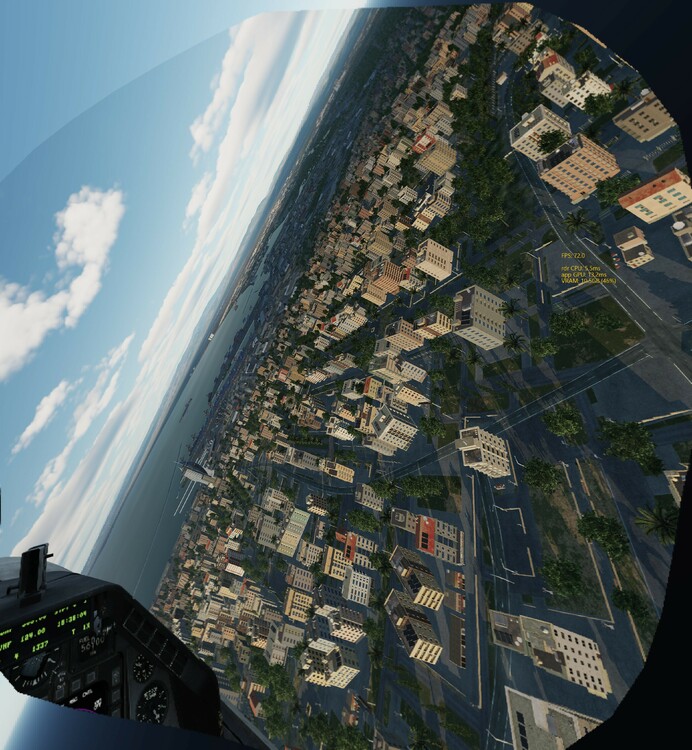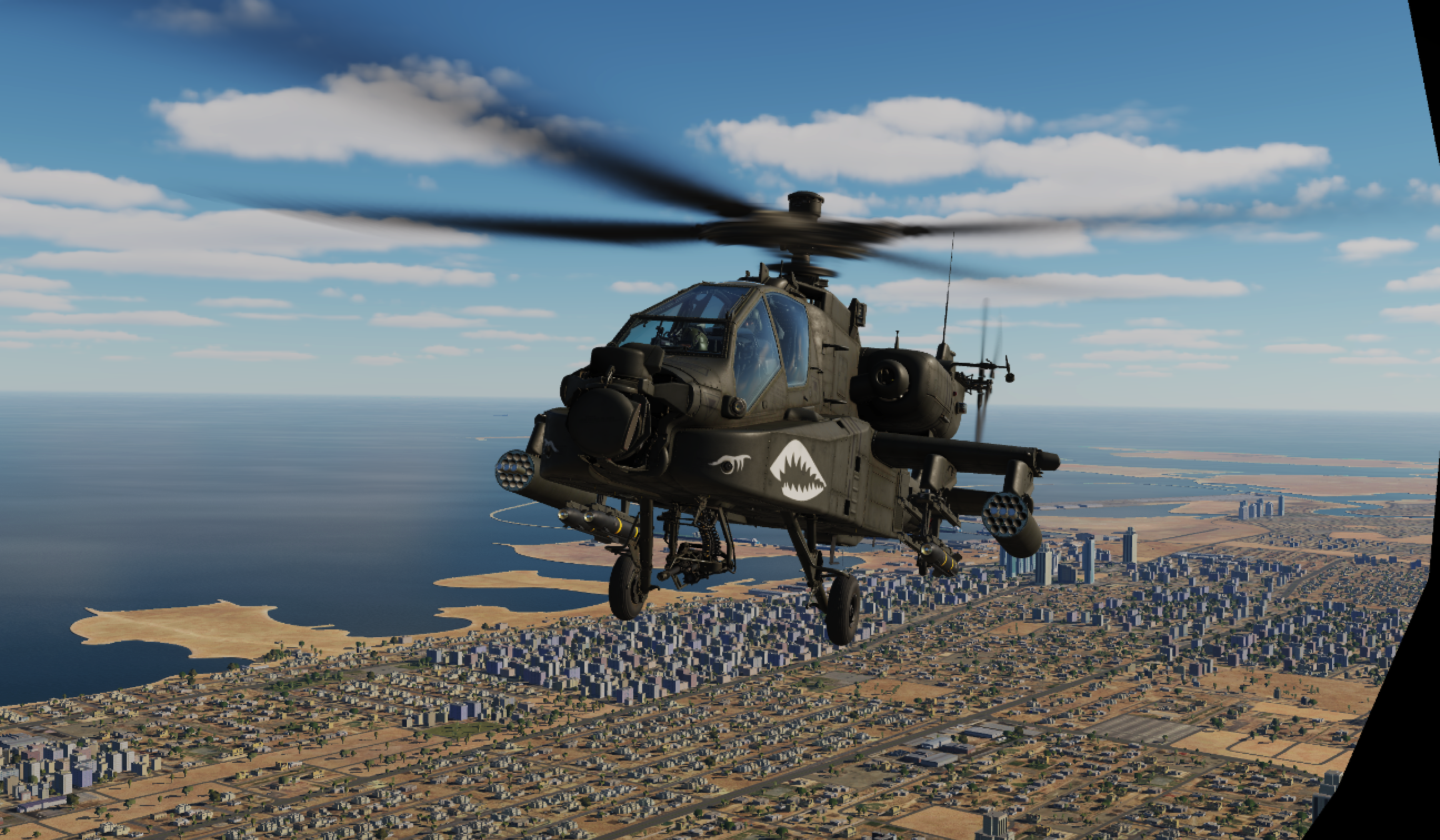

Snuten
Members-
Posts
44 -
Joined
-
Last visited
-
Hi! The strange thing is that I had my install exactly on a Samsung 970 Evo plus 1TB but had this problem. Then I moved the install to a SATA SSD. And then I moved it back to the 970 Evo plus and was working on that device since. Perhaps Microsoft issue/drivers that was messed up?
-
It was on Auto by default, and I changed it to PCIe4 before I moved to the Sata, with no luck. So I put it back to Auto, and now moved DCS back to it(as you know). So it should be on Auto now. But that m.2 slot is up to PCIe5 but the drive is PCIe4.
-
Darn it It is now even a weirder issue. I thought I was maybe something with registry(or some file in the DCS folder) that perhaps got "reseted" by executing it from different drives that fixed it, but obviously not. Im happy mine works with the nvm2 drive now. Loading times went from like 55 sec with Sata to 15 sec with nvm2.
-
I tried it back and forth yesterday, between only DCS PD or only OpexXR override, and I ended up with the same I already had. But by only use DCS PD I get worse performance and also much fuzzier image. I guess that's because of DLSS. But with a mix of super sample in OpenXR, before DLSS kicks in(I think), it gets much sharper and better. But one thing I wonder is if WMR (G2) renders the screen different, like concentrating more pixels in the centre or something. Because when I was using 1.5 supersampling in the WMR tool, I saw objects and trees much further away with the same View Distance radius(Medium). And the more I increased the WMR's supersampling to like 1.8 I saw even further and more trees/buildings. Like DCS was "thinking": Oooh, so big screen, now we can populate it with more stuff. But when increasing only with the Override Resolution inside OpenXR Toolkit, I see no difference regarding this, nor by increasing it via Oculus app. But I guess I would not be able to run it in 72fps with more objects in the viewport anyway. Im really pushing it now with a frame time around 10-13.2ms(Marianas excluded) I also using MT btw.
-
Haha And yes, perhaps it was fixed in that 2.9 patch, did't think of that
-
Guess what I did just now? I copied DCS install folder back to my very same NVME disc again, and now it works without stutter. Quite weird though. But Im happy since now I have decent loading times again. The Sata SSD took ages to from start DCS to cockpit with textures. (And yes, I triple checked that I'm running from the new location and MT version) It would be cool to know if this would work for you as well. And don't move the folder, just copy paste it, in case it's not working for you.
-
Yes it is a bit confusing, but I have found that using resolution override in OpenXR gives me better fps than just increasing the DCS PD more. And also it seems to get sharper(less blurry ) in distance by doing so. Also, I can't get more PD (SS) from the oculus app, and Oculus Debug tool resolution override don't work for me. I have increased it in OpenXR TK even more and I am now super happy. Not sure about you not getting OpenXR TK to work. Perhaps you need to force openXR via your DCS.exe shortcut?
-
Im doing it but just lowering the Saturation(and that works).
-
Thanks, and sorry for late reply. This is what mine says, so it seams like it is overriding it: [OXRTK] 2023-10-31 16:18:10 +0100: Requesting extra extension: XR_KHR_win32_convert_performance_counter_time [OXRTK] 2023-10-31 16:18:10 +0100: Application name: 'DCS World', Engine name: '' [OXRTK] 2023-10-31 16:18:10 +0100: Using OpenXR runtime Oculus 1.89.0 [OXRTK] 2023-10-31 16:18:10 +0100: Using OpenXR system Meta Quest 3 [OXRTK] 2023-10-31 16:18:10 +0100: Overriding OpenXR resolution: 2910x3150 [OXRTK] 2023-10-31 16:18:10 +0100: Using OpenXR resolution (no upscaling): 2910x3150 [OXRTK] 2023-10-31 16:18:10 +0100: Using OpenXR resolution (no upscaling): 2910x3150 [OXRTK] 2023-10-31 16:18:13 +0100: Using Direct3D 11 on adapter: NVIDIA GeForce RTX 4090 [OXRTK] 2023-10-31 16:18:13 +0100: Open menu with CTRL+NEDPIL [OXRTK] 2023-10-31 16:18:13 +0100: Creating swapchain with dimensions=3784x4096, arraySize=1, mipCount=1, sampleCount=1, format=29, usage=0x21 [OXRTK] 2023-10-31 16:18:13 +0100: Creating swapchain with dimensions=3784x4096, arraySize=1, mipCount=1, sampleCount=1, format=29, usage=0x21 [OXRTK] 2023-10-31 16:18:15 +0100: Projection calibration: 0.21166, 0.19319 | -0.21166, 0.19319 [OXRTK] 2023-10-31 16:18:17 +0100: Late initializeInterceptor() call [OXRTK] 2023-10-31 16:35:32 +0100: xrEndFrame: XrResult failure [XR_ERROR_SESSION_NOT_RUNNING] Origin: OpenXrApi::xrBeginFrame(m_vrSession, nullptr) Source: D:\a\OpenXR-Toolkit\OpenXR-Toolkit\XR_APILAYER_MBUCCHIA_toolkit\layer.cpp:3251 [OXRTK] 2023-10-31 16:38:10 +0100: xrEndFrame: XrResult failure [XR_ERROR_SESSION_NOT_RUNNING]
-
Thanks, I'm gonna check that log and see.
-
Regarding DLSS I wonder one thing. Let's say that Im using 1:1 in the Oculus app(or in WMR tools/ Steam) and in DCS using 1.0 in PD, I will get one image that is 1:1, what ever the headset is. And then I turn DLSS on in DCS. It will get blurry since now DCS renders in lower resolution and DLSS is upscaling it to 1:1 resolution? What is the amount that DLSS tells DCS(or what ever game) to render at? I mean, since it gets blurrier and I must compensate that by increasing resolution. DLSS must somehow tell the game to render at a lower resolution to gain performance, then upscale it by its "magic" AI and stuff. Since the performance gets better but image quality gets worse. So what's is the value DCS is rendering in? Or what is DLSS telling DCS to render in when DLSS is turned on? Or how is it working? Does anyone know?
-
Glad you liked it! In the DCS VR settings tab it just showing my 1.35 PD that I have set in the options.lua (since in DCS you just get increments of whole decimals) And I think I have some numbers on the masking thing where DCS uses AA (if I remember correct) and I think it is about 0.43 or something). I can check again tomorrow. *Edit, I started it up and took a screenshot. null
-
Im just gonna share my settings for the Quest 3 that Im quite happy with as a former Reverb G2 user. Sure, with the G2 and 4xMSAA I get much shaper image in centre and can see much further (witch I think is because I used much higher SS but it also was 90hz at 45 fps with Motion Re-projection) Now Im running in 72fps almost fluid with no motion re-projection(ASW) like 95% of the times, even low over dense areas, with the exception of Marinas Map, that one have issues even over the sea.(I have all maps) I do use both DLSS with a DCS PD of 1.35(enter it via the options.lua file) and 1.3x scale @72hz in Oculus app. And I also override this a bit via OpenXR Toolkit and using CAS as scaler(see image). I know that Im using scaling and stuff via several plugins/apps. But I can't see any direct performance hit by doing so. Tried all combos now I think But this is running really smooth with some exceptions because I had to move the DCS install to a Sata SSD(to get the multithreading to work without all the constant stutter). So I guess the occasional "evenly burst stutter" I get now is when loading in areas/textures, especially in the first 3-5 minutes, and that it's due to the slower SATA drive. All in all, the 72fps, slightly better FOV, edge to edge clarity and the pancake lenses, this wins over the G2 for me. My specs: Win10 64bit, AMD 7800X3D, 32 GB 6000mhz Ram, RTX-4090, Quest 3 with an inline powered link cable. The last image is what it looks like over Haifa in the Syria map. Unfortunately my Windows Screenshot plugin crashed and did not restart when I took screenshots of nVidia settings, but I think the rest is more common sense. Forgot about the Swedish in the Nvidia settings. But I think it is listed in the same order? In the 1st image and in bold text is FXAA=Off and Edge AA=On and Prefer Maximum Performance In the 2nd image it is Texture filtering and is in order: On, Performance, Allow and On
-
No, I have one dedicated Nvme for windows only, then I have/had one dedicated Nvme for DCS, so not from C System drive. Then I also have 2 older 1TB Samsung Sata SSD's installed. So I just moved it to one of those. Im thinking it has something to do with (not an expert) bandwidth/PCIe/Nvidia/Windows/DCS multithreading . Now when running on the Sata instead, there is absolutely zero stutter. And if there is, it is because of framedrop/performance as I also can see in the FPS counter. Super-smooth and sharp! I have Gen 4 PCIe as well (and PCIe Gen 5 Ready MB) And BTW, I had DCS on the same NvME disc on my older system(i9 900K + 3090) as well. So I guess I did not have to upgrade it if I knew this. But now I have a 4090 and a faster CPU
-
So, I gave it a try.. And true that! By running DCS(just copy and pasted the whole docs folder into my Sata SSD and created a new shortcut with --force_openXR and stuff) with a Sata SSD it worked, when I turned Turbo Mode on all the stutter was gone! THANKS a millions times! Is this common known you think? I mean if others had the stutter problems with NVME discs? Now I have also tweaked and tweaked. So far Im at 1.5 in Oculus resolution. 800 in bitrate(no sound cutouts), Link Sharpening Quality, Distortion= Low. And in DCS I have medium vis. range. Textures to high on both. Selected DLAA, then I selected DLSS and some sharpening. And DCS DP at 1.4. And it runs in 72fps almost everywhere except Marinas(must be some optimization problems on that map). Super happy, virtually no shimmer at all with DLSS/DLAA. It do have a look of "water color-filter" though, as I always thought DLSS looked like. But the stability of the image is awesome, thanks to your suggestion about the Sata SDD I would never been able to utilize my 4090 I think Im at the edge of the card, since I tweaked the fixed fovetated render notch lower as well to achieve a stable 72fps. But damn the Sata SDD was slow, compared to the NVME disc. Did't know that DCS loaded in textures blurred an din steps with the NVME disc. But totally worth it! Thanks again! Tomorrow Im gonna see if I can set Ocuclus PD to 1.0 and increase the DCS PD more.


